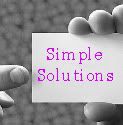It is a device to help us to solve data and saving of time.
OR
Computers receive data from user in form of input process it and display result in the form of output.
OR
Calculation of mathematical program under the electronic radiation
HARDWARE:
The physical part of the computer which are touchable, see-able and workable.
TYPES OF HARDWARE:
1) Input devices
2) Output devices
3) Storage devices
With the help of input devices we give instruction to computer.
With the help of output devices we get solution or data from computer.
In storage devices we store or save our record or data.
BASIC PART OF COMPUTER
KEYBOARD:
Keyboard like a typewriter.
PARTS:
1) Alpha numeric keypad
2) Numeric keypad
3) Arrows keys
4) Function keys.
MOUSE:
Mouse is a device which helps to open files and perform other operations.
PARTS:
Left click -----------------> operational button
Right click ----------------> Properties button
Scroll ball:
It helps to move one place to another.
NOTE:
Computer understand binary language (0,1)
SYSTEM UNIT:
A unit or box having all hardware (internal and external) for operating the computer.
IMPORTANT PART OF SYSTEM UNIT:
1) Motherboard
2) CPU
3) Hard disk
4) Ram (Random Access Memory)
5) Rom (Read Only Memory)
6) CD ROM
7) Floppy Drive
8) Sound card
9) VGA card
10) Modem
11) Power supply
12) Cables
CPU:
It known as CENTRAL PROCESSING UNIT it controls all the traffic of computer functions.
It works like brain of human being.
MONITOR:
It is like a TV. In this device user view result which is given by computer.
USER: The person who uses the computer is called user.
SOFTWARE
Program running in the computer and used to solve the problem it can seeable workable but not touchable.
OR
Set of instructions
TYPES OF SOFTWARE
System software
Application software
SYSTEM SOFTWARE:
Program which are used to operate computer
APPLICATION SOFTWARE:
Program which are used to solve problems of user
OPERATING SYSTEM:
The proper way of communication between user and computer it is also known as system software.
TYPES OF OPERATING SYSTEM:
Single user
Multi user
EXAMPLE:
SINGLE USER:
Dos (Disk Operating System)
MULTI USER:
Windows
Graphical interface
MODELS OR VERSIONS OF WINDOWS:
Windows 3.0
Windows 5.0
Windows 5.11
Windows 95
Windows 97
Windows 98
Windows 2000
Windows NT
Windows XP
Windows me
Windows LINDOW
Windows vista
Windows 7
WINDOWS
An operating system like a plate form to run all application software’s.
DESKTOP:
First screen of windows
PART OF DESKTOP:
Task bar
Wallpaper\background
TASK BAR:
Bars consist on different tasks.
PART OF TASKBAR:
Start menu
Task pane
System tray
START MENU:
This menu holds all programs of the computer.
TASK PANE:
When user opens any file or folder the name of file or folder automatically come in the task pane.
SYSTEM TRAY:
Tray having icons of system related items.
WALLPAPER \ BACKGROUND: Picture of desktop
How to change the background or wallpaper of desktop?
1) R.C on desktop empty space
2) L.C on properties
3) L.C on desktop
4) Choose required wallpaper or background
5) Apply it.
METHOD OF LOGIN:
1) Press Ctrl + Alt + Delete keys from keyboard.
2) Type user name or login #
3) Type your password.
4) L.C on ok or press enter key on keyboard.
SACREEN SAVER:
Like a movie show, this is used to make system speed accurate and also minimum usage of electricity when user is not working on computer.
1) R.C on empty space
2) L.C on properties
3) L.C on screen saver
4) Select required screen saver and also time
5) Apply it
FILE:
Area where user describes their problems and gets solution
FOLDER:
Area where user store their records like file or folder
FOLDER
Basic container is known as folder.
How to make a folder?
1) R.C on empty space of the desktop
2) L.C on new
3) L.C on folder
HOW TO OPEN THE FOLDER?
Double L.C on the folder
OR
1) R.C on folder
2) L.C on open
EXPLORE: To move or check files or folder on existing a place
1) R.C on folder
2) L.C on explore
NOTE:
Explore basically consists on folders and drives structures.
COPY PASTE:
To make duplicate of a file or folder to another place
Select required file or folder
1) R.C on folder
2) L.C on copy
OR
Press ctrl + c keys on the keyboard.
Move to other place where you want to paste the copied file.
1) R.C on the empty space
2) L.C on paste
OR
Press ctrl + v on the key board
CUT PASTE:
To move required file or folder from one place to another
Select required file or folder
1) R.C on file or folder
2) L.C on cut
OR
Shortcut keys (press ctrl + x key on the keyboard)
Move to required place where you want to paste the file or folder
1) R.C on empty space
2) L.C on paste
OR
Ctrl + v
DRAG AND DROP:
To pick something and place to another drive or folder
1) Press L.C on required file or folder
2) Drag it to required place
3) Leave the L.C
DELETE:
To erase\remove something likes file or folder.
TYPES OF DELETE:
Permanent
Temporary
PERMANENT DELETE:
To remove or erase file or folder from hard disk
Select required file or folder
Press shift + delete keys on keyboard
TEMPORARY DELETE: To erase file or folder from hard disk which are recoverable
1) Select file or folder
2) R.C on required file or folder
3) L.C on delete
OR
Press delete key on keyboard
CHANGE THE NAME OF FOLDER OR FILE:
1. Select required file or folder
2. R.C on select folder
3. L.C on rename
4. Give required name
5. Press enter key on keyboard
6. Short key f2
TO CHANGE THE ICON OF THE FOLDER:
1. R.C on required folder
2. L.C on properties
3. L.C on customize
4. L.C on change icon button
5. Select required icon
6. Apply it
TO APPLY PICTURE ON FOLDER:
1. Select required folder
2. R.C on select folder
3. L.C on properties
4. L.C on customize
5. L.C on change picture
6. Apply it
NOTE:
Picture is visible in thumbnail view in the folder. Picture is not visible on desktop folder icon.
TO MAKE THE SHORTCUT ANY FILE OR FOLDER:
1. R.C on empty space
2. L.C on shortcut
3. Select required file or folder
4. L.C on next
5. L.C on finish
TO HIDE ANY FILE OR FOLDER:
1. R.C on required file or folder
2. L.C on properties
3. L.C on hidden check box
4. L.C on apply
5. L.C on ok
TO UNHIDE REQUIRED FILE OR FOLDER:
1. Open any folder
2. L.C on tools menu in menu bar
3. L.C on folder option
4. L.C on view
5. L.C on show hidden files or folder
FOLDER INNER VIEW:
1. Title bar
2. Menu bar
3. Standard button tools bar
4. Address bar
5. Working area
SHORTCUT KEY:
Minimize ===> Alt + spacebar + n
Maximize ===> Alt + spacebar + x
Close =======> Alt + F4
SELECTION
SELECT ALL:
To select all things
Press ctrl + a keys on the keyboard
OR
1. L.C on empty space but don’t leave the L.C
2. Drag to required things
SPECIFIC SELECTION:
1. Press ctrl key from the keyboard, Don’t leave the ctrl key
2. L.C on required files or folder
CONTINUOUS SELECTION:
1. Press shift key from the keyboard
2. Press arrow key from the keyboard
TASKBAR PROPERTIES:
Group or ungroup same task or same files folder buttons in task pane.
TO GROUP
1. R.C on taskbar
2. L.C on properties
3. L.C on group similar items
NOTES: When L.C is press on group option a check sign is visible.
TO UNGROUP:
Repeat all same step of grouping but now check sign hide.
AUTO HIDE:
1. To hide the taskbar
2. R.C on taskbar
3. L.C on properties
4. L.C on auto hide
5. Apply it
6. The taskbar will hide
7. When took cursor to taskbar it will visible.
TO REMOVE ALL RECENT DOCUMENT LIST
1. R.C on taskbar
2. L.C on properties
3. L.C on start menu
4. L.C on customize
5. L.C on advance
6. L.C on clear
TO ADD ANY FILE OR FOLDER IN PROGRAMS LIST:
1. R.C on taskbar
2. L.C on properties
3. L.C on start menu
4. L.C on classic start menu
5. L.C on customize
6. L.C on add
7. Define required file or folder
NOTEPAD:
Notepad is a default type writer of window.HOW TO OPEN NOTEPAD:
1. L.C on start menu button
2. L.C on all programs
3. L.C on accessories
4. L.C on notepad
TO SWITCH BETWEEN DIFFERENT FILES OR FOLDER WITHOUT MOUSE
Press Alt key but don’t leave alt key
Press tab key to move
To hide all files or folder in taskbar
Press window + D key from the keyboard
HOW TO INCREASE THE SIZE OF TASKBAR OR TO MOVE TASKBAR:
1. R.C on taskbar
2. L.C on lock taskbar, if taskbar is locked it will be unlocked
3. Place mouse pointer on the edge of the taskbar and drag the task bar.
NOTE: Size of the taskbar can be increase on hall of the desktop.
TO VIEW TWO OR MORE THEN TEO FILES OR FOLDER ON DESKTOP AT A TIME:
1. Open required files or folder
2. R.C on taskbar option(vertically or horizontally)
TO VIEW FILES OR FOLDER IN THEIR ORIGINAL SIZE:
1. R.C on taskbar
2. L.C on cascade window
FILE EXTENTION:
Identification of file of application software and system software
Software file extension.
Paint =========> .bmp
Notepad ======> .txt
Image ========> .jpg
Word ========> .doc
Excel ========> .xls
PowerPoint ===> .ppt
Access =======> .mdb
Internet ======> .htm
You Might Also Like :





































0 comments:
Post a Comment